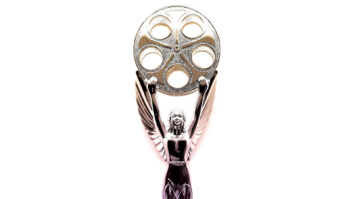
Traditionally, orchestral recordings don’t require much in the way of equipment — an onslaught of amplifiers, compressors and digital processing would only obscure the pristine instruments and reverberant hall’s sound. Engineer/audio scientist Keith O. Johnson, aka “The Professor,” the secret weapon behind dozens of acclaimed albums for Reference Recordings, incorporates some of these seemingly timeless techniques into his Grammy Award-winning work. Furthermore, his hand-built equipment and audio innovations — from high-speed to high-def — have not only raised the bar for high-fidelity albums, but changed the way that we hear music.
While at Stanford University in the 1960s, Johnson created a solid-state 3-channel recorder that he used on more than 100 recordings. “It has 3.5-megahertz bias and still runs,” he says. “I thought that if I could focus the magnetic field onto the tape, I could get rid of some losses that normally occurred in recording. And it worked.” The unit later formed the backbone of the high-speed tape duplicators he designed in partnership with Gauss Electrophysics. “It literally revolutionized the whole field overnight,” he says.
Johnson went on to contribute his knowledge to the MCA DiscoVision video disc, engineered orchestral works for the Armed Forces Radio and conceived an optical CCD scanner, the Colortek system, which removes noise from damaged motion picture soundtracks. In the 1970s, he worked with rock band Ambrosia and partnered with producer Alan Parsons to develop the Projectron, one of the first tools to incorporate expressive polyphonic sampling.
In 1976, he joined producer Tam Henderson and Marcia Martin to form Reference Recordings, launching a legacy of high-end/half-speed mastered LPs and high-definition CDs (DDD). Johnson co-invented the HDCD technology with Pflash Pflaumer, and in 1996, they formed Pacific Microsonics to introduce the concept of high-resolution audio. In 2000, Microsoft purchased Pacific Microsonics and continues to incorporate HDCD technology into its PC offerings. Johnson now consults with Microsoft; his latest project, Speaker-Correction, uses modeled correction of speakers to improve computer sound and can be found in XP software.
In the midst of his work as a developer, Johnson’s ongoing relationship with Reference Recordings gives “The Professor” a platform with which to engineer and experiment with loudspeakers, microphones and other equipment designs. To record renowned ensembles such as the Dallas Wind Symphony, Chicago Pro Musica and the London Philharmonic, Johnson uses some manufactured equipment — Tascam recorders, Microsonics Model 1 and 2 HDCD processors (he’s admittedly biased) and a Neumann U47 here and there — but mainly uses gear he’s either custom-built or extensively modified at his shop in Pacifica, Calif. His modular console arrangement is built from passive mixer and high-voltage discrete amplifier designs; setups include a 2-channel console for main mics, an accent console to highlight instruments and a 5-channel console to process a dedicated multichannel feed. “Now there might be a workstation involved, but its only purpose is for editing and splicing,” he says. “We don’t have DSP to degrade the signals.”
He models his setup after one used by longtime engineer Gordon Parry of London Decca Classical, using EQs on only four inputs, each optimized for a specific task: woodwinds, brass, voice and reverb. Mics include a pair of front omnis, a pair (or more) of semi-directional outriggers on either side, random incident omni pairs to capture hall reverb, ribbon or large-diaphragm condensers for solo instruments and a directional center group between the omnis. “The main and center group are 90 percent of what you hear,” says Johnson. “But I add what I call ‘time-panned stereo pair accents’ to produce delays simulating inter-aural binaural listening.”
He has also used his custom equipment to develop sample libraries for East-West, including the EWQL Symphonic Orchestra Series and Symphonic Choir library. As for new technology, he sees the value of added bits, resolution and features, but questions the parts and “cookbook designs” used to create newer equipment. “Circuits are becoming scrimpier and scrimpier,” he says. “ICs are efficient, but performance trade-offs create sonic losses that don’t always correlate to measurements. Then, we get more of less. I look for relics. It’s almost impossible to duplicate the natural, transparent sound that was happening then. Our standards are restrictive. And I’m caught in the middle.”
Assistant editor Heather Johnson isn’t related to Keith, but they both belong to the KStars, a San Francisco-based running club. He’s fast. She’s catching up.





